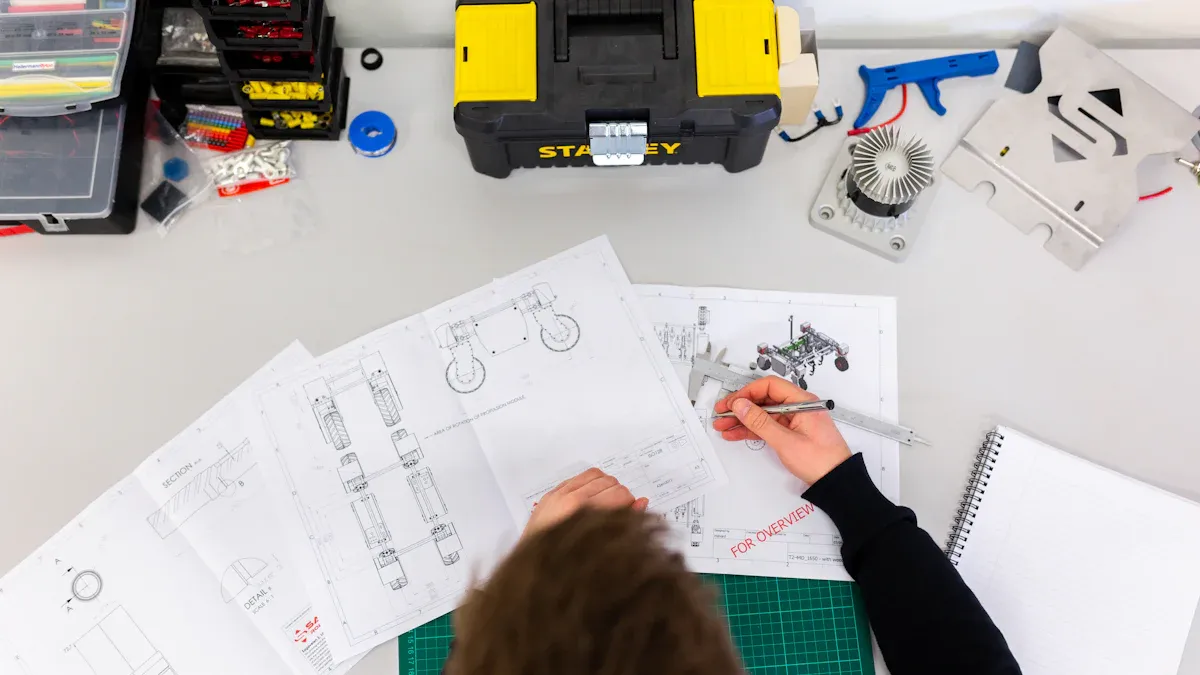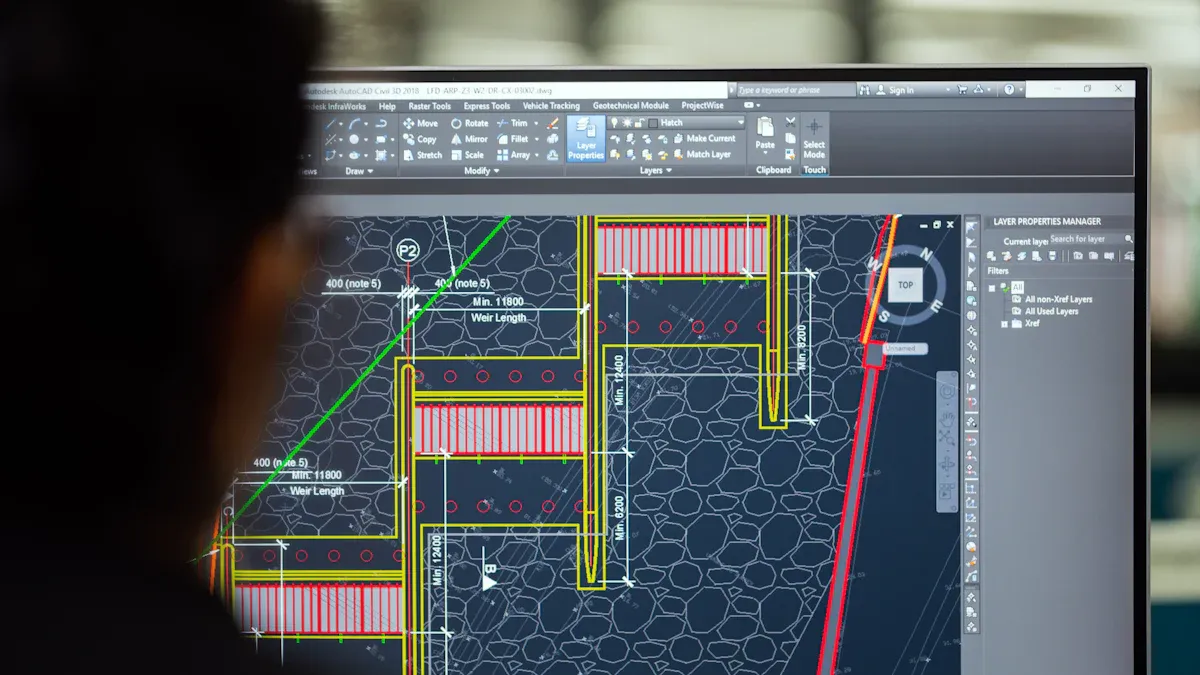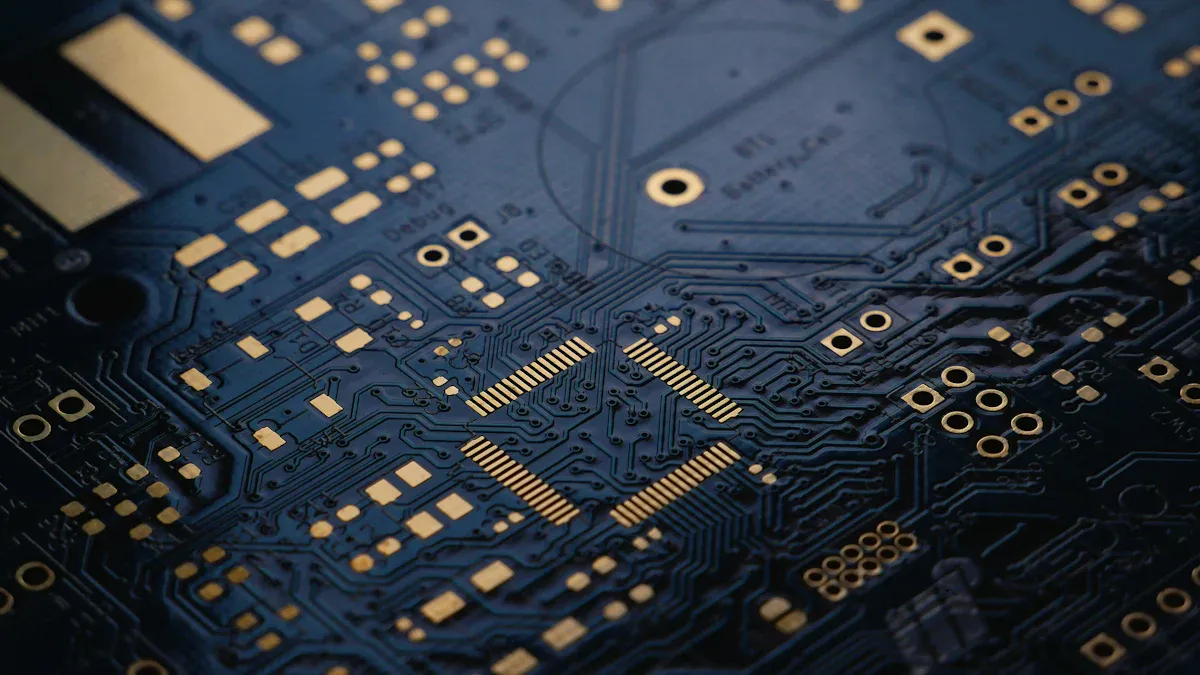
The rotation speed of the EPIのコンデンサー is a critical factor in the formation of epitaxial layers. It ensures uniform material deposition across the substrate surface. Variations in speed, whether faster or slower, can compromise uniformity and result in defects. Engineers depend on precise control of the EPI SUSCEPTOR to optimize this parameter, enhancing semiconductor quality and boosting manufacturing efficiency—both essential for advanced technology applications.
キーテイクアウト
- The speed of EPI susceptor rotation is very important. It helps spread material evenly on semiconductor wafers and avoids flaws.
- Engineers must set the right speed by checking reactor design, material type, and heat to get the best results.
- It’s important to balance how fast layers grow, their quality, and costs. Watching and adjusting the process often can save time and lower mistakes.
The Role of EPI Susceptor Rotation in Epitaxial Growth

What Is an EPI Susceptor?
An EPIのコンデンサー is a critical component in epitaxial growth systems. It serves as a platform that holds the semiconductor wafer during the deposition process. Made from materials like graphite or silicon carbide, it withstands high temperatures and ensures thermal stability. The susceptor’s design allows it to distribute heat evenly across the wafer, which is essential for uniform layer formation.
In addition to heat management, the susceptor plays a role in gas flow dynamics. Its rotation ensures that the gases used in the deposition process interact uniformly with the wafer surface. This interaction is vital for achieving consistent material deposition. Without the susceptor, the epitaxial growth process would lack the precision required for modern semiconductor manufacturing.
Why Rotation Is Essential for Epitaxial Growth
The rotation of the EPI SUSCEPTOR ensures uniformity in the epitaxial layer. As the susceptor spins, it exposes all parts of the wafer to the same thermal and chemical environment. This movement minimizes variations in material deposition, which can lead to defects.
Rotation also improves gas flow distribution within the reactor chamber. It prevents stagnant zones where gases might accumulate unevenly. By maintaining a consistent flow, the process achieves better layer quality. Engineers carefully control the rotation speed to balance these factors and optimize the growth process. Proper rotation is a cornerstone of high-quality semiconductor production.
How Rotation Speed Impacts Uniformity

The Link Between Speed and Deposition Uniformity
The rotation speed of the EPI SUSCEPTOR plays a crucial role in determining the uniformity of the epitaxial layer. When the susceptor rotates at an optimal speed, it ensures that the wafer surface receives an even distribution of gases and heat. This balance is essential for achieving consistent material deposition across the entire wafer.
If the rotation speed is too slow, certain areas of the wafer may experience prolonged exposure to reactant gases, leading to uneven deposition. On the other hand, excessively high speeds can disrupt the gas flow, causing turbulence and irregularities in the layer. Engineers carefully calibrate the rotation speed to maintain a steady and uniform deposition process.
Common Defects Caused by Incorrect Speeds
Incorrect susceptor rotation speeds can lead to several defects in the epitaxial layer. One common issue is thickness variation, where some regions of the wafer become thicker or thinner than others. This inconsistency can compromise the performance of the semiconductor device.
Another defect is the formation of crystal dislocations. These occur when the deposition process fails to maintain a uniform growth rate, often due to uneven gas flow or thermal gradients. Additionally, improper speeds can result in contamination or particle deposition, further degrading the quality of the layer. Addressing these defects requires precise control of the susceptor’s rotation speed.
Thermal and Gas Flow Dynamics in the Reactor
The thermal and gas flow dynamics inside the reactor are directly influenced by the susceptor’s rotation speed. As the EPI SUSCEPTOR rotates, it helps distribute heat evenly across the wafer surface. This uniform heating prevents the formation of hot or cold spots, which can affect the growth rate and material quality.
The rotation also impacts how gases flow within the reactor chamber. At the right speed, the susceptor ensures a smooth and consistent gas flow, allowing reactants to interact evenly with the wafer. However, incorrect speeds can create turbulence or stagnant zones, disrupting the deposition process. Engineers must consider these dynamics when optimizing the rotation speed to achieve the best results.
Optimizing EPI Susceptor Speed for Best Results
Key Factors Influencing Optimal Speed
Several factors determine the optimal rotation speed of the EPI SUSCEPTOR. Engineers must consider the reactor’s design, including its size and gas flow configuration. Larger reactors may require slower speeds to maintain uniform gas distribution, while smaller systems might benefit from faster rotations.
The type of epitaxial layer being grown also plays a role. For instance, layers requiring precise thickness control demand tighter speed tolerances. Temperature is another critical factor. Higher temperatures can increase the reaction rate, necessitating adjustments to the susceptor’s speed to avoid uneven deposition.
Additionally, the wafer’s size and material properties influence the ideal speed. Larger wafers may need slower rotations to ensure uniform heating and gas exposure. Engineers must carefully balance these variables to achieve consistent results.
Material-Specific Speed Considerations
Different materials require unique rotation speeds to optimize epitaxial growth. Silicon, one of the most commonly used materials, typically performs well at moderate speeds. This allows for even gas distribution and consistent layer formation. However, materials like gallium arsenide or silicon carbide may require slower or faster speeds due to their distinct thermal and chemical properties.
For example, silicon carbide’s high thermal conductivity demands precise speed control to prevent temperature gradients across the wafer. Similarly, compound semiconductors like gallium nitride often involve complex gas chemistries. These require careful adjustments to the susceptor’s rotation to ensure uniform deposition. Understanding the specific needs of each material is essential for optimizing the process.
Industry Examples of Successful Optimization
Many semiconductor manufacturers have successfully optimized EPI SUSCEPTOR rotation speeds to improve production quality. One notable example is the production of silicon-based chips for microprocessors. By fine-tuning the susceptor’s speed, manufacturers achieved uniform layers with minimal defects, enhancing chip performance and reliability.
Another example comes from the LED industry, where gallium nitride is a key material. Companies producing high-efficiency LEDs optimized susceptor speeds to ensure consistent deposition of thin layers. This resulted in brighter, longer-lasting LEDs. These examples highlight the importance of precise speed control in achieving high-quality outcomes across various applications.
Challenges and Trade-offs in Susceptor Speed Management
Risks of Excessive or Insufficient Speeds
Managing the rotation speed of the EPI susceptor involves risks when speeds deviate from optimal levels. Excessive speeds can create turbulence in the reactor chamber. This disrupts gas flow and leads to uneven deposition. High speeds may also cause mechanical stress on the susceptor, reducing its lifespan.
On the other hand, insufficient speeds can result in poor gas distribution. This creates stagnant zones where material builds up unevenly. Such conditions increase the likelihood of defects like thickness variations or crystal dislocations. Engineers must carefully monitor and adjust speeds to avoid these risks.
ヒント: Regular maintenance of the susceptor system can help prevent mechanical issues caused by improper speeds.
Balancing Growth Rate, Quality, and Cost
Optimizing susceptor speed requires balancing three critical factors: growth rate, layer quality, and production cost. Faster speeds may increase throughput, but they can compromise layer uniformity. Slower speeds improve quality but reduce production efficiency.
Manufacturers must also consider operational costs. Adjusting speeds often impacts energy consumption and equipment wear. Striking the right balance ensures high-quality layers without inflating costs.
Addressing Variability in Processes and Materials
Different materials and processes introduce variability in susceptor speed requirements. For example, silicon wafers may tolerate a wider range of speeds compared to gallium nitride. Reactor designs and gas chemistries also influence speed optimization.
To address these challenges, manufacturers rely on extensive testing and simulation. These tools help identify the best speed settings for specific materials and conditions. By adapting to variability, engineers can maintain consistent results across diverse applications.
EPI susceptor rotation speed plays a vital role in creating uniform, defect-free epitaxial layers. Optimizing this parameter improves manufacturing efficiency and enhances product quality. Manufacturers must assess their materials and processes to determine the ideal speed. This careful evaluation ensures consistent results and supports advancements in semiconductor technology.
よくある質問
What happens if the susceptor rotation speed is not optimized?
Incorrect speeds lead to uneven deposition, defects like crystal dislocations, and reduced layer quality. Optimizing speed ensures uniformity and enhances semiconductor performance.
ヒント: Regularly monitor and adjust speeds to maintain optimal conditions.
How do engineers determine the ideal susceptor speed?
Engineers use simulations, testing, and material-specific data to identify the best speed. Factors like reactor design, wafer size, and material properties influence their decisions.
Can susceptor speed optimization reduce manufacturing costs?
Yes, it minimizes defects and improves efficiency, reducing waste and rework. This optimization lowers production costs while maintaining high-quality semiconductor layers.
お問い合わせ: Balancing speed with quality ensures cost-effective manufacturing.


